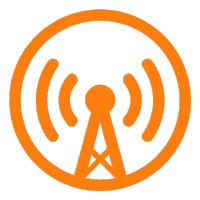Ep 066 – Email Marketing Secrets Every Life Coach Should Know
Or click below to listen on your favorite podcast player
If you’re a life coach who wants more clients, you’re probably already working hard to hone your coaching skills. But coaching and marketing are two completely different skill sets.
And unfortunately, if people don’t know you exist, they can’t benefit from your coaching.
That’s where email marketing comes in—and not just any email marketing.
If your emails aren’t landing in inboxes, aren’t getting opened, or aren’t building trust, you’re missing out on your biggest opportunity to connect with potential clients.
Here are 6 tips every life coach needs to know about email marketing:
1. Create a Value-Packed Lead Magnet
Your lead magnet is more than a freebie—it’s a trust-building tool. It’s the first real taste someone gets of what it’s like to learn from you. If it’s light on value, they’ll assume your paid coaching is too.
But if it’s insightful, helpful, and genuinely improves their life, they’ll think, “If this is free, I can only imagine what the paid offer is like.”
Don’t treat your lead magnet like a checkbox. Use it as an opportunity to blow people away with the value you can deliver.
2. Provide Consistent Value Through Email
Don’t be afraid to show up in inboxes regularly. A weekly email that speaks directly to what your ideal client is going through helps build trust over time. You’re not being annoying—you’re being helpful. You’re saying, “I see you. I understand. I’ve got something that can help.”
Consistency is the key. When you show up consistently, people begin to rely on you—and when they’re ready to get help, they’ll come to you first.
3. Craft Compelling Subject Lines
Your subject line is the gatekeeper. If it doesn’t get opened, the value inside doesn’t get seen.
Here are a few tips to write great ones:
• Keep it short and specific. Lead with the most important words.
• Use personalization—include their first name when possible.
• Try using square brackets to highlight key phrases.
• Use casual, friend-style language (lowercase, emojis, informal punctuation) to make your emails feel like they came from someone they know.
One of the best-performing subject lines I’ve ever used? “remember me {{ contact.first_name }}”
4. Include Clear Calls to Action
Most of your emails should offer education and insight—about 80%. But even educational emails should guide people to what’s next.
Whether that’s a blog post, a podcast episode, or a consultation, tell your readers what action to take and why it benefits them. Don’t leave them guessing—spell it out clearly.
Also, sprinkle in success stories from your clients. Testimonials help reinforce that your coaching creates real results.
5. Analyze and Optimize Your Emails
You don’t need to obsessively check your open and click rates—but you do want to pay attention to them.
• Before you write a new email, check how your last few performed.
• Every month or so, look at trends—what’s improving, what’s slipping?
• Make adjustments based on what’s actually working.
This will help you write better emails and make more informed decisions about what your audience wants to hear.
6. Send More Emails to Warm Subscribers
As of 2024, email providers like Gmail and Yahoo track your sender reputation. If too many people ignore your emails or mark them as spam, your emails might stop getting delivered altogether—and you won’t even know it.
The solution? Segment your list.
Send more frequent emails to people who have clicked or opened recently (say, within the last 90 days). Send fewer emails to cold subscribers. This tells email providers that your messages are wanted and helps keep your deliverability high.
Bonus tip: keep your list clean. If someone hasn’t opened or clicked in a long time, it might be time to let them go.




You must be logged in to post a comment.